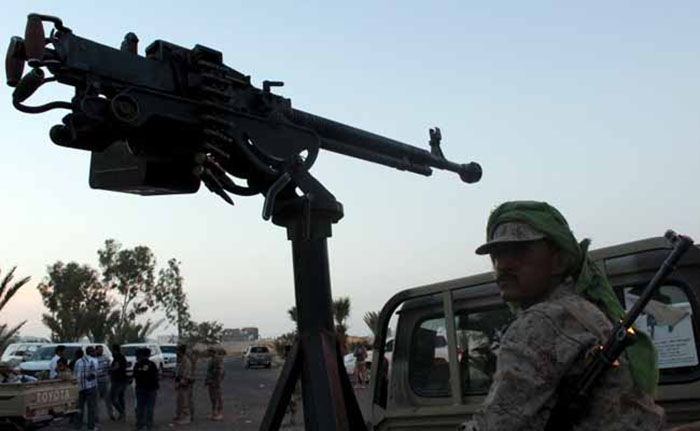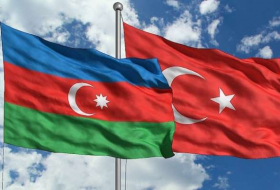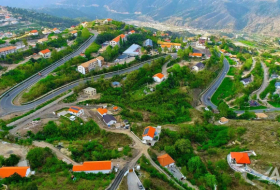Yemen`s Abundant Guns Fuel its Messy Civil War

The precise number of weapons is impossible to verify, but the profusion of arms on display in Marib makes the three-to-one claim look not far off.
Almost all of the men walking in the city centre, their cheeks full of the mild narcotic qat leaf, had an assault rifle slung across a shoulder; many of them also sported pistols in garish holsters or had hand grenades in jacket pockets.
More than 5,400 people have been killed since March in a conflict perpetuated by shifting alliances based on region, religion, tribe and drawn into a Saudi-Iranian Cold War.
Easy access to weapons has enabled widely ranging groups to enter the fighting, including Islamist militants who have seized control of the port city of Mukalla, several hundred kilometres (miles) east of Marib in the Hadramawt region.
United Nations experts cited the abundance of arms in Yemen as a regional worry in 2013, when al Qaeda linked militants already had a major base in the south, but the war has given such worries even greater urgency.
Houthi militia, allied to Iran, and troops loyal to former president Ali Abdullah Saleh, were closing in on Marib a month ago, but were forced back by local fighters, some trained by Gulf countries, which assisted them with air strikes.
The Houthis and Saleh`s forces have now been pushed into the hills 30 km away, but the periodic sound of distant explosions is constant evidence in Marib that the war remains only a short drive away.
A slight 18-year old in a brown robe and turquoise headscarf, rifle dangling casually over his arm, said the first thing he did when his village of Arhab near the capital Sanaa was overrun by the Houthis was to go to a famous arms market.
"I went to Jihana and bought weapons. Then I came to Marib. That was four months ago. Now, God willing, we will fight the Houthis back. Soon we will be in Sanaa," he said, identifying himself only by the nickname `Abu Arhab".
At Marib`s gun market, a Kalashnikov assault rifle sells for a few hundred dollars and a hand grenade for $30, said Yemeni soldiers who accompanied Reuters on a visit to the city last week, and who all bought their weapons locally.
Heavier weapons are also available, they said, including rocket propelled grenades, mortars and light artillery - popular items with local tribal leaders long before the war began and used as much to impress followers as for any martial value.
Wars in the 1960s, 1980s, 1990s and last decade, the involvement of a range of regional and international powers, the constant fighting in nearby countries like Somalia and the disintegration of the army have facilitated the influx of arms.
On the southern edge of Marib, near its 3,000-year old Sabaean temples and an ancient ruined city, the damage to a small hamlet revealed the high-water mark of the Houthi advance. A few soldiers were sweeping a field for landmines.
The forecourt roof of a petrol station had been staved in by an airstrike, the side of a mosque had been punched through by a shell and the facades of two nearby adobe houses built in the pretty local style were sprayed with bullet holes.
Further back on the road into the desert, near several of the checkpoints erected every few kilometres, often around an oil drum between traffic lanes, sat small rusting tanks with rounded turrets that appeared to date from decades ago.
In this volatile environment, weapons are often customised: an assault rifle turned tommy gun via the addition of a big circular magazine, an anti-aircraft canon mounted in place of a machine gun on the back of a pick-up truck, three fighters sitting proudly behind.
Among groups of soldiers and irregular fighters in civilian clothes, the merits of, and problems with, their weapons is a frequent topic of conversation. While most are purchased from Marib`s market, the guns of a lucky few who have been trained in Saudi Arabia to fight the Houthis were given them by Gulf states.
However, whatever training these soldiers received in Saudi Arabia, they still handle weapons with casual carelessness rather than respect. In cars on bumpy roads, rifles juggled around, muzzles pointing first at one passenger then another.
In the back of a pick-up truck rolling through the fertile farmland around Marib, where orange groves hemmed the road, a young soldier pulled out a bullet and used its point to push through the ring pull on a drink can that had stuck.
The carrying of arms in Yemen is a habit that starts young: two children, who looked 13 or 14 years old, one in a maroon sarong and black headscarf, the other in a striped blue shirt, were strolling through the market place each with a Kalashnikov.
Further along, by a snack stall selling hard boiled eggs that customers could dip in a hot sauce, Saleh Fahdi was carrying an assault rifle. He was 12 years old, he said, and bought the gun with money given him by his father a month ago.















































